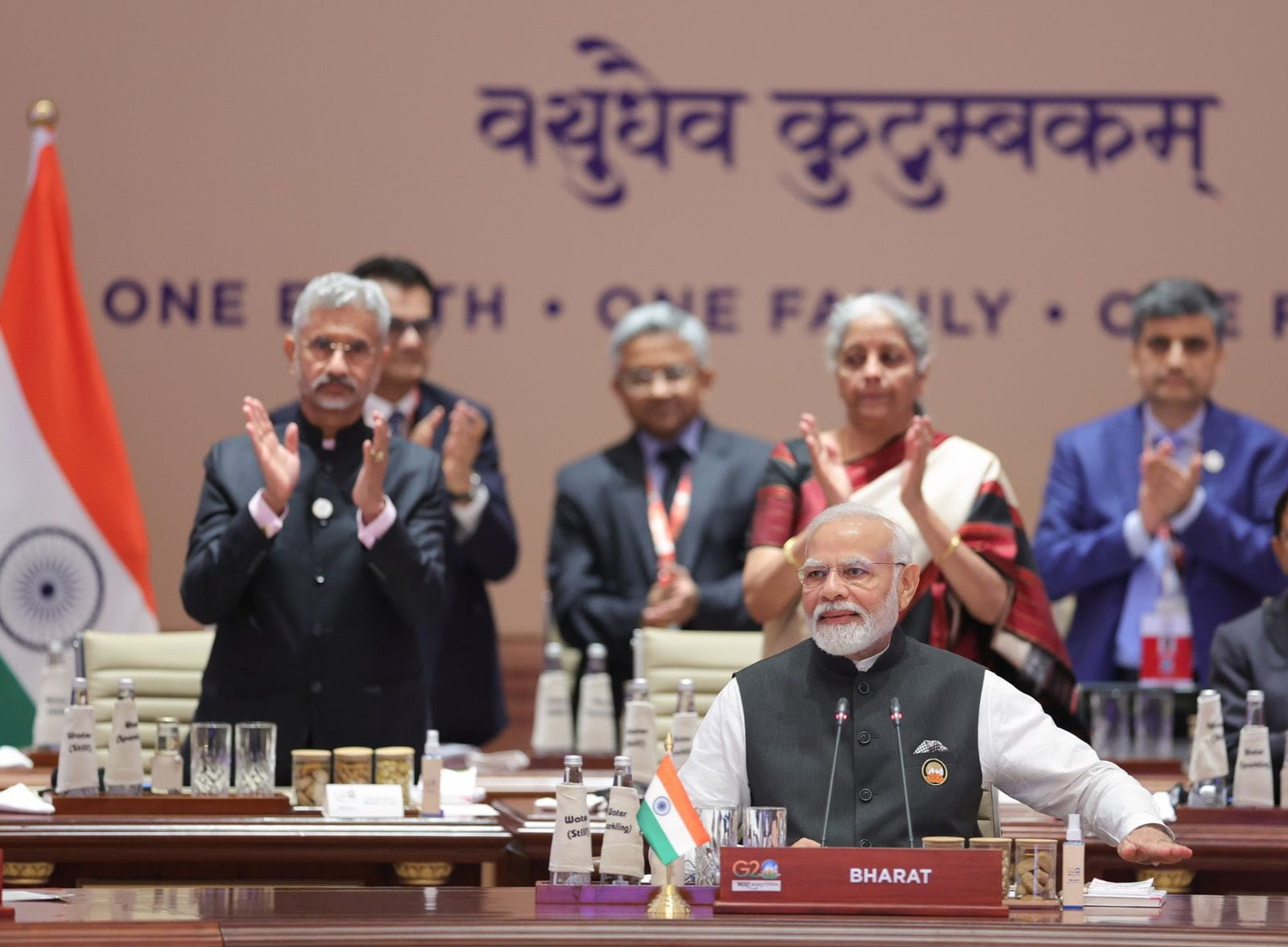
Five takeaways from the Delhi G20 Summit
The just concluded New Delhi G 20 Summit on September 9-10, 2023 is significant for many reasons. Following are five takeaways of the Summit:
A Strategic hat trick
Russia: India succeeded in rolling back the hitherto sharp Western condemnation of Russia. The toning down of the Bali language condemning Russia on Ukraine is a major development whose significance cannot be overstated. In New Delhi we did not “condemn or deplore” Russia’s invasion of Ukraine nor call upon Russia to “completely and unconditionally withdraw from the territory of Ukraine”. To achieve this under the close gaze of Western eyes is particularly noteworthy. In the process, India earned Russia’s gratitude. The New Delhi wording has laid the seeds for reducing the level of international shrillness on Ukraine and steering the conflict in the direction of diplomatic rather than military solutions.
The US-led West: Despite easing pressure on Russia, and finessing suggestions from some G7 countries to invite the President of Ukraine, India managed to not only keep the consensus with the West intact but also further cemented its relations with it. If this looks like successful mediation, it probably is. As part of the grand bargain, we overlooked the use of unilateral sanctions by the West and its weaponization of the core G20 agenda – currency, trade, financial and investment flows and energy. The Indo-US relationship has emerged stronger, in good shape and with greater convergence on coping with the rise of China.
China: China was sidelined. It was missing in action, not just in terms of the physical presence of its President, but also the dynamism of its economy. It left the field open for India and the West, both of which grabbed the opportunity with both hands. This gave Prime Minister Narendra Modi the chance to showcase his relations with President Biden and give him pride of place through the proceedings. In the context of this drafting exercise, India freed Russia from its dependence on China by helping it on Ukraine, displaying its formidable influence with the South as well as the West. China was prevented from playing the role of a spoiler. While the West was happy with the absence of the Russian President, we did not miss his Chinese counterpart.
To manage a consensus that keeps both Russia and the West satisfied, and China subdued, is no ordinary consensus. Both the West and Russia have demonstrated their comfort with India’s leadership and keeping it in play. This is a useful perch to be sitting on.
South by South-West
We showed to both the North and the West the asset India can be in guiding and shaping the agenda of the South. Better India than China to ensure balance and composure in a disparate and restless South, prone to strategic radicalization. We earned the confidence of all three poles of the global order - the North, the West and the South and showed that money power is not the only currency to wield influence. The West and the G7 strategy to hand over a successful presidency to India is one that will outlive a document or a Summit.
India has positioned itself well in being a credible yet acceptable voice of the South. No one likes revolutionaries any more.
Inside out
India has extended its footprint beyond its borders by exporting its model of national transformation and finding acceptance for many of its initiatives which have been tried and tested. Validation of Digital Public Infrastructure, financial inclusion, vaccines, lifestyle solutions to the climate threat, green energy transition, circular economy and reference to the need for trillions rather than billions of dollars to meet climate needs of the developing world are some examples of India’s wins and solutions to global problems. We leveraged our successes at home and plans for the future to establish the case for a greater say for India in world affairs.
Our call for a place on the high tables of the UN and other multilateral institutions have been overshadowed by concrete achievements on the ground that speak for themselves. We are getting better and better at inventing and crafting our own international coalitions. We are getting ahead of the curve.
The Gulf is King
The presence of the UAE and Oman as Guest Countries, alongside Saudi Arabia as Member, was a culmination of a diplomatic effort spanning many years, driven by a single-minded purpose, the fruits of which were visible during India’s G20 Presidency. India’s strategic investment in the Gulf kingdoms and parallelly Israel has been amply reciprocated by them.
The launching of the India-Middle East-Europe Economic Corridor following on the footsteps of the I2U2 is historic. It is a paradigm shift in how India sees and defines its extended Western neighbourhood and has sent the intended signals to the right capitals.
In the driving seat, with a healing touch, filling a vacuum
India has all the cards to play. From the US to Europe to Russia to China, India is being noticed and courted. It is part of all major forums and solutions. It is more confident and hence more visible and more active than it has been in recent memory. The images of the G20 Presidency were deliberately curated. No military guards of honour and no hard power at display. It was culture, people, sustainability, heritage and technology all the way. The consensus in the New Delhi Declaration is a euphemism for the healing touch a fragmented and broken world needs.
The G20 Presidency was part of the Indian project to fill a geopolitical vacuum, provide an alternative model and bring a fresh approach to solutions to global problems. Much work lies ahead to kick start the world economy, restore confidence and optimism. The barriers that have been rapidly erected will not go away easily, but it is precisely at such times that good news is needed. This is what India has been able to provide.
(Exclusive to NatStrat)